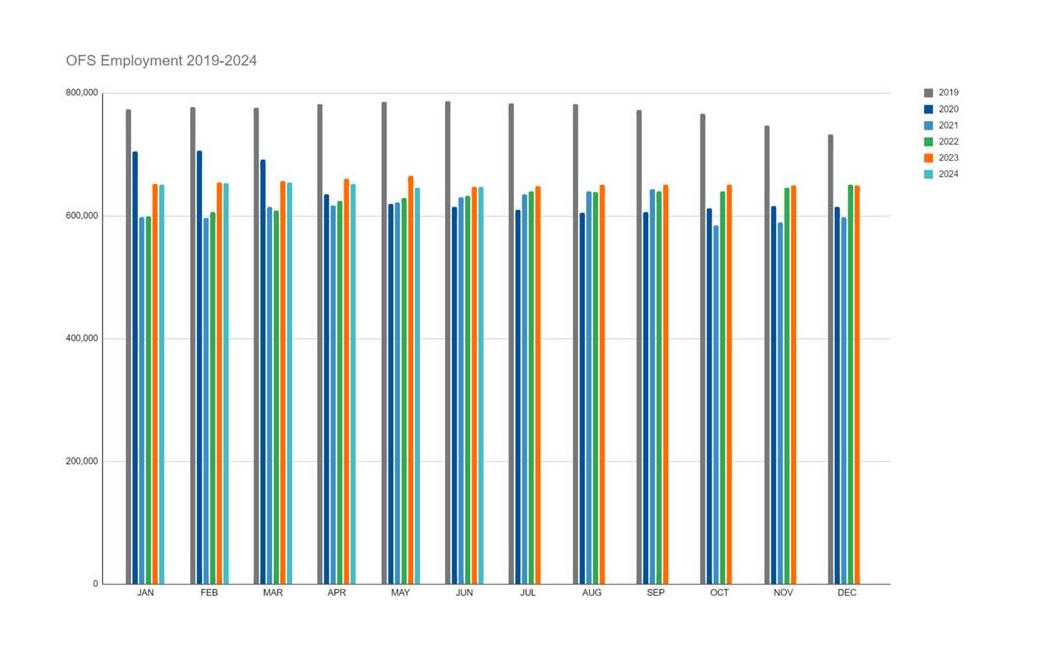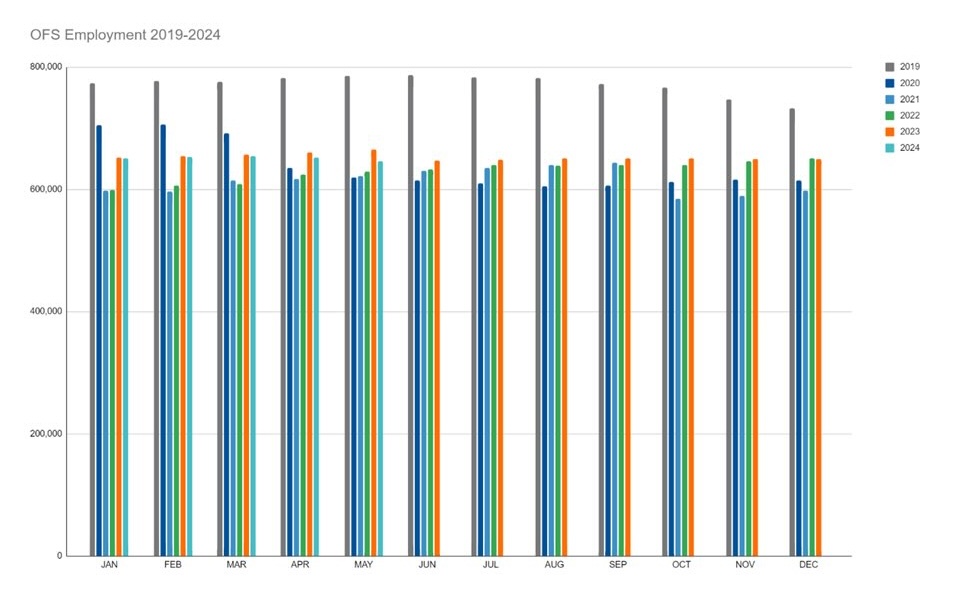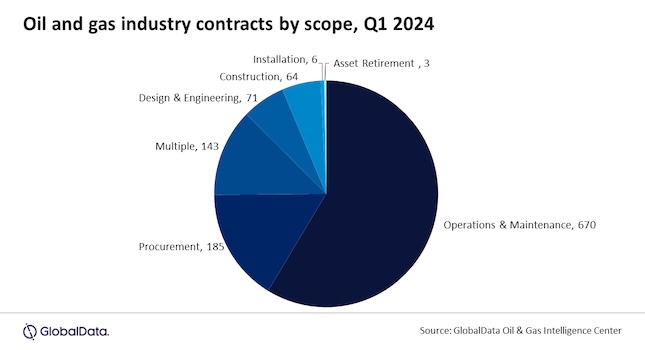Instrumentation improves control of the water removal process from natural gas
Natural gas, as it is produced from a well, contains water. Before transferring the gas into a pipeline for distribution, as much water as possible must be removed to eliminate carryover, with operators being alerted to any remaining water detected (See figure 1).
Figure 2: Horizontal oil-gas-water separator. Courtesy: Endress & Hauser[/caption]
Separators can go by many names such as liquid separators, oil separators, water and oil separators, etc. — but the most common separators are a two-phase unit that separates gas from liquid — or a three-phase unit that separates gas, oil, and water.
Controlling separators
Instrumentation (See figure 3) and control systems need to measure and control various processes in a separator. Temperature and pressure in a separator are complementary variables and are required to correct for mass flow measurements. A separator requires strict pressure/temperature monitoring because of process operating and safety conditions. Temperature monitoring is always required to guarantee the right conditions for the separation process.
The system must control incoming flow to ensure the gas and liquid flow rates are low enough so that gravity segregation and vapor-liquid equilibrium can occur.
The temperature also needs to be controlled, because if the temperature of pipeline walls or storage tanks decreases below the dew point of the water vapors present in the gas, the water starts to condense on those cold surfaces. If so, natural gas in combination with liquid water can form methane hydrate that may plug valves, fittings or even pipelines.
No matter the type of separator operating in an oil or gas processing facility, proper control of the fluid levels is crucial to assure stable, efficient and safe operations. To achieve this goal, repeatable level measurements are required, regardless of the variability of the process and the characteristics of the fluids. This includes undesired conditions, such as high viscosity, presence of foam and emulsion layers thicker than 2 inches (5 cm) or dragged solids (sand or rocks).
Ideally, the gas and liquids reach a state of equilibrium at the correct pressure and temperature within the vessel. Industry standards for liquid retention time of solution gas break-out are within a range of 1 to 3 minutes in horizontal separators.
Although a separator is highly instrumented, controlling flow, pressure, and temperature to achieve maximum production of water-free, pipeline quality natural gas is a difficult task. In many separators, data from instrumentation is sent to a flow computer, where its job is to analyze all the data and determine what variables — if any — need to be adjusted.
Although a separator is meant to remove all water from the natural gas, carryover of water sometimes occurs, and this condition must be quickly detected to alert operators.
A flowmeter for it
Endress+Hauser recently developed a new ultrasonic flowmeter (See figure 4) to measure the flow of natural gas and other process media. The Prosonic Flow G 300/500 has built-in pressure and temperature sensors. The input from these sensors is combined with measured sound velocities to calculate the compensated flow, and the pressure and temperature measurements can be transmitted separately via one of two digital communication links: HART imposed on the flowmeter’s 4-20 mA mass flow process variable output or Modbus RS485.
The flowmeter is offered with an “advanced gas analysis” software package option to calculate additional parameters and process variables. Some examples are volume flow, corrected volume flow, energy flow, calorific value, Wobbe index, gas type, molar mass, methane content (%), density, and viscosity.
The Wobbe Index, incidentally, is a measure of the interchangeability of fuel gases and their relative ability to deliver energy.
The software can also detect water carryover through the analysis of sensor test points such as signal strength, flow asymmetry and acceptance rate. Once detected, this condition can alert operators in one of two ways. The first is via a built-in relay, and the second is via the digital communication link.
Many separators have a mist eliminator at the gas outlet, which is essentially a wire mesh filter-like device. The purpose of it is to capture liquid (all liquids, not just water droplets) and drain it or drip the liquid into the holding part of the separator. These devices are sized based on the flow rate and liquid properties. The eliminator must be sized correctly so that it efficiently captures most of the liquid, without sacrificing flow and separator retention time.
By detecting liquid carryover with the ultrasonic flowmeter described, we accomplish a few things:
- Understand how efficient the mist eliminator is functioning in relation to gas flow rate
- If a step change in the “moisture diagnostic variable” occurs it could indicate that the mist eliminator is damaged
- Proper gas-liquid separation isn’t taking place and the separator performance should be evaluated. The control system can adjust dump cycle time and retention time, or adjust back pressure at the gas outlet.
Detecting liquid carryover can allow a producer to adjust the separation process. Downstream plants are designed for certain gas properties and wet gas could result in higher operating cost at the plant due to reprocessing and wasted energy.
The flowmeter provides much of the data and computations supplied by a dedicated flow computer, making it easier for process engineers to understand separator performance and control it more efficiently.
Flowmeter details
The flowmeter (See figure 5) measures both dry and wet gases with ±0.5% accuracy, even when process and ambient conditions fluctuate significantly. It operates at process temperatures up to 302°F and pressures up to 1450 psi. All wetted parts are made of stainless steel and are compliant to the stringent requirements of NACE MR0175/MR0103. The ultrasound transducers are also available in titanium Grade 2.
The flowmeter’s measuring system has been developed in accordance with IEC 61508 (SIL), it is also preferred for use in safety-related applications. It also has Endress+Hauser’s Heartbeat Technology integrated into the flowmeter, which enables permanent self-diagnostics with the highest diagnostic coverage. It also enables device verification certified by TÜV in accordance with DIN EN ISO 9001:2008 without process interruption.
The flowmeter’s transmitter includes a web server as standard, enabling direct data access in the field from any device capable of hosting a web browser, such as a laptop, smartphone, or tablet. Data storage via HistoROM ensures maximum data security.
Controlling an oil/gas/water separator to extract water from natural gas is difficult because the control system and flow computer can only infer water content. The new flowmeter from Endress+Hauser produces a wealth of information that instrument engineers can use to detect water carryover, and to better understand how a particular separator is working and how to improve its control.



